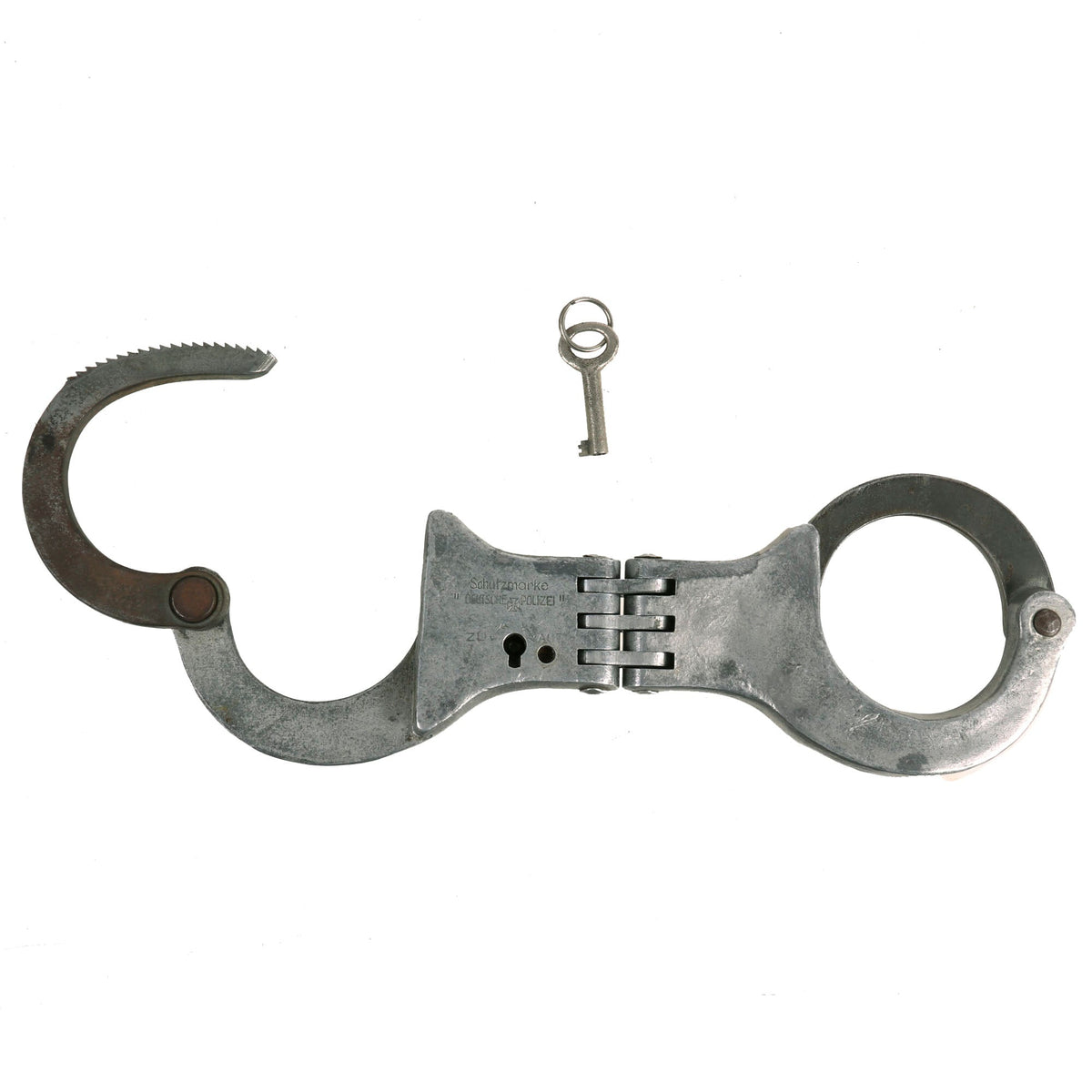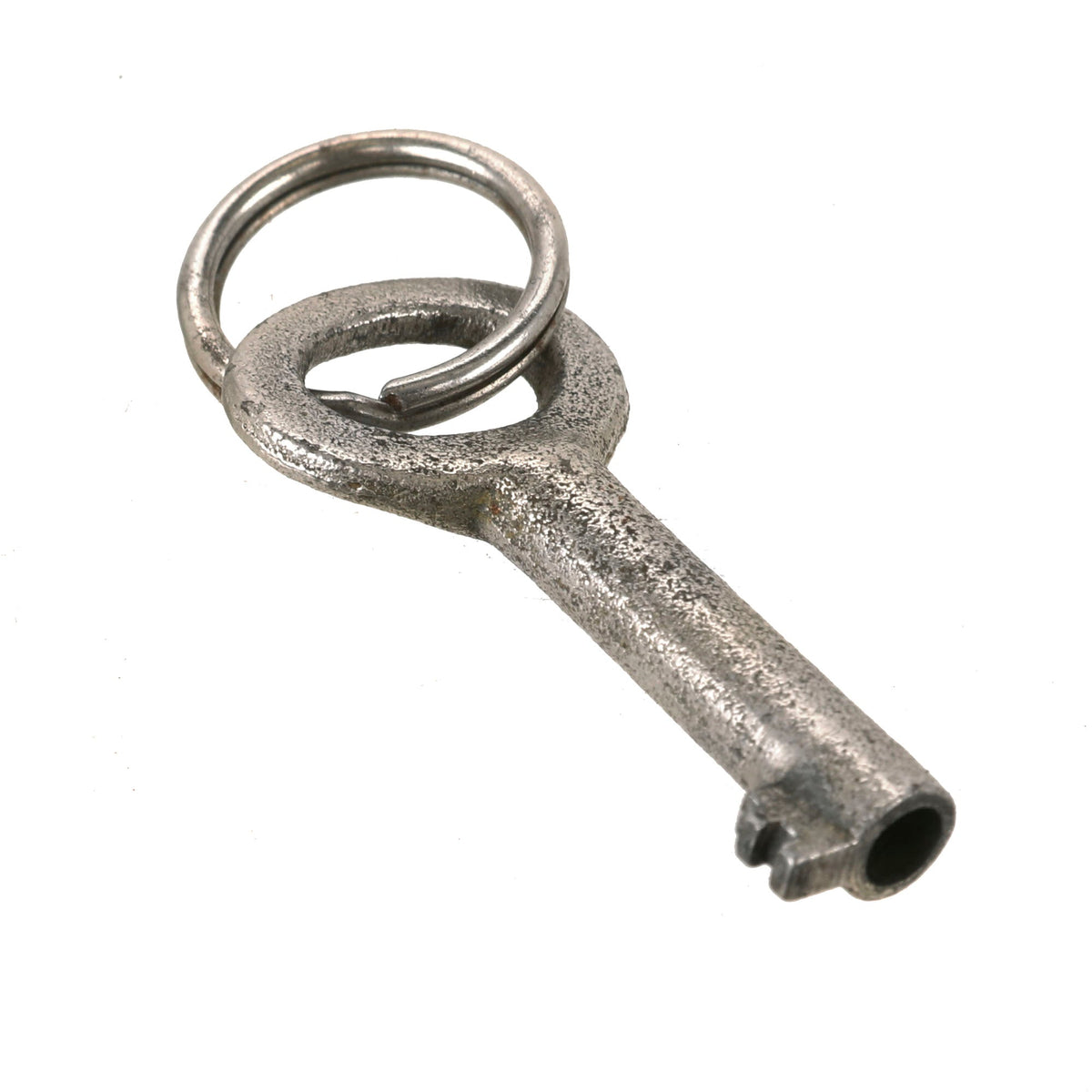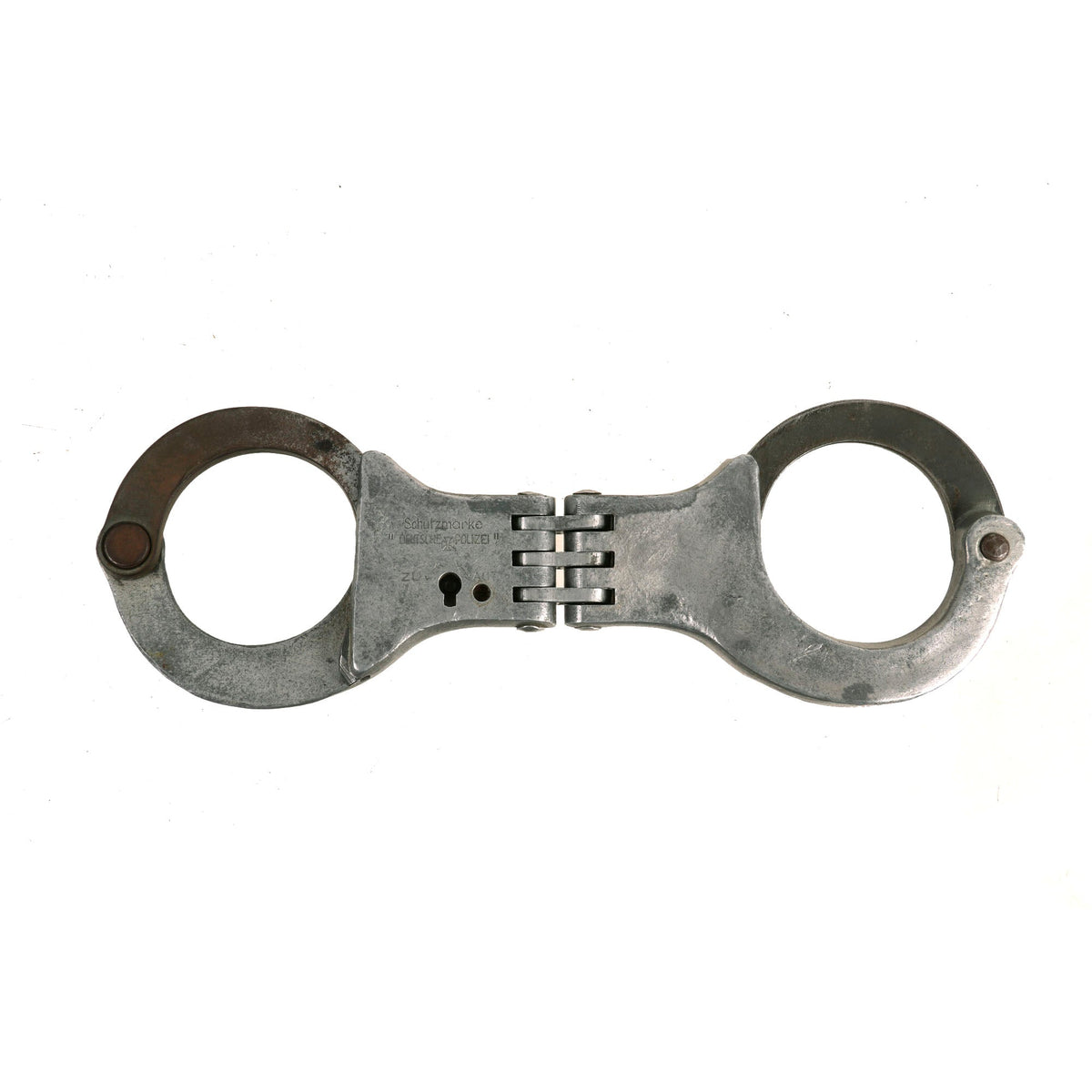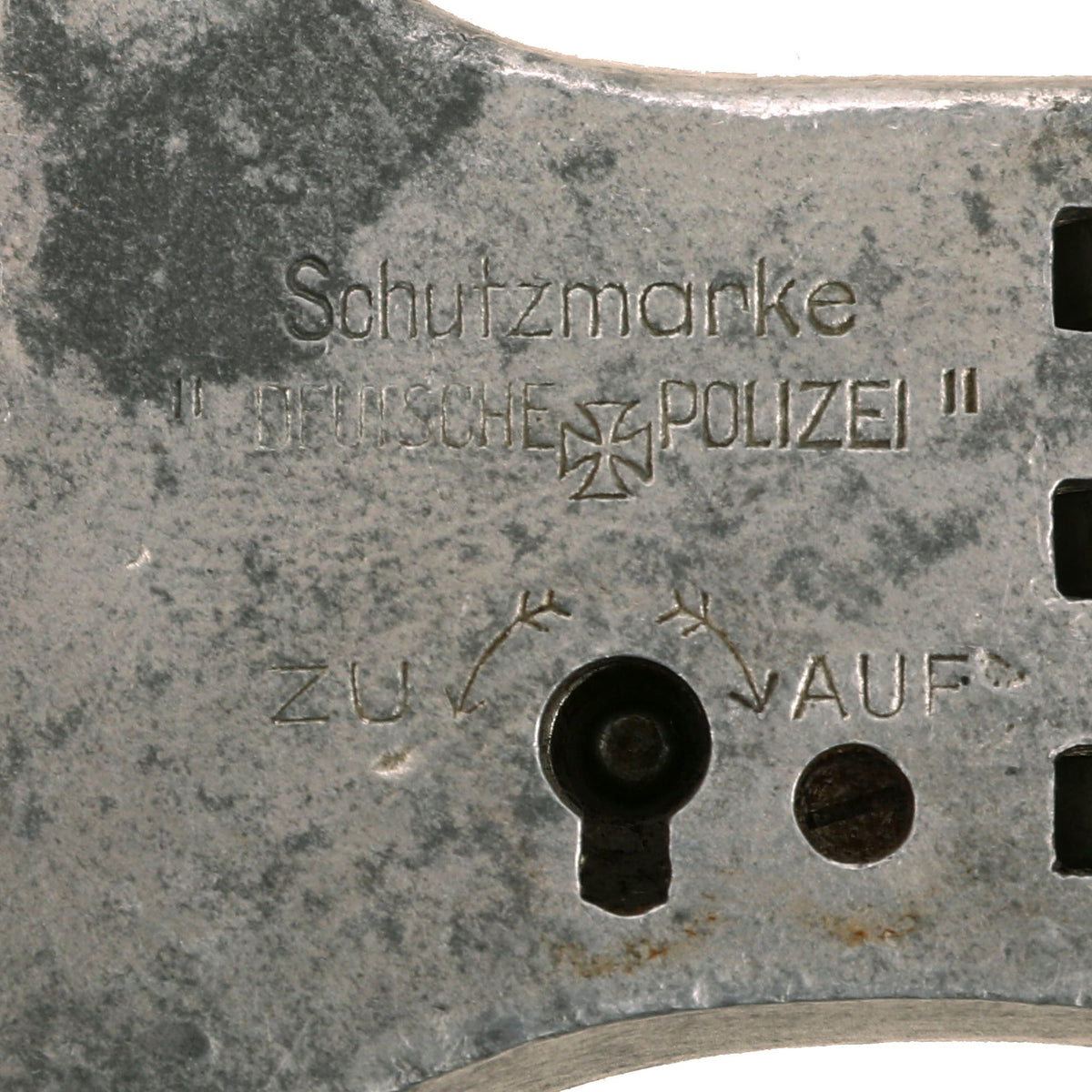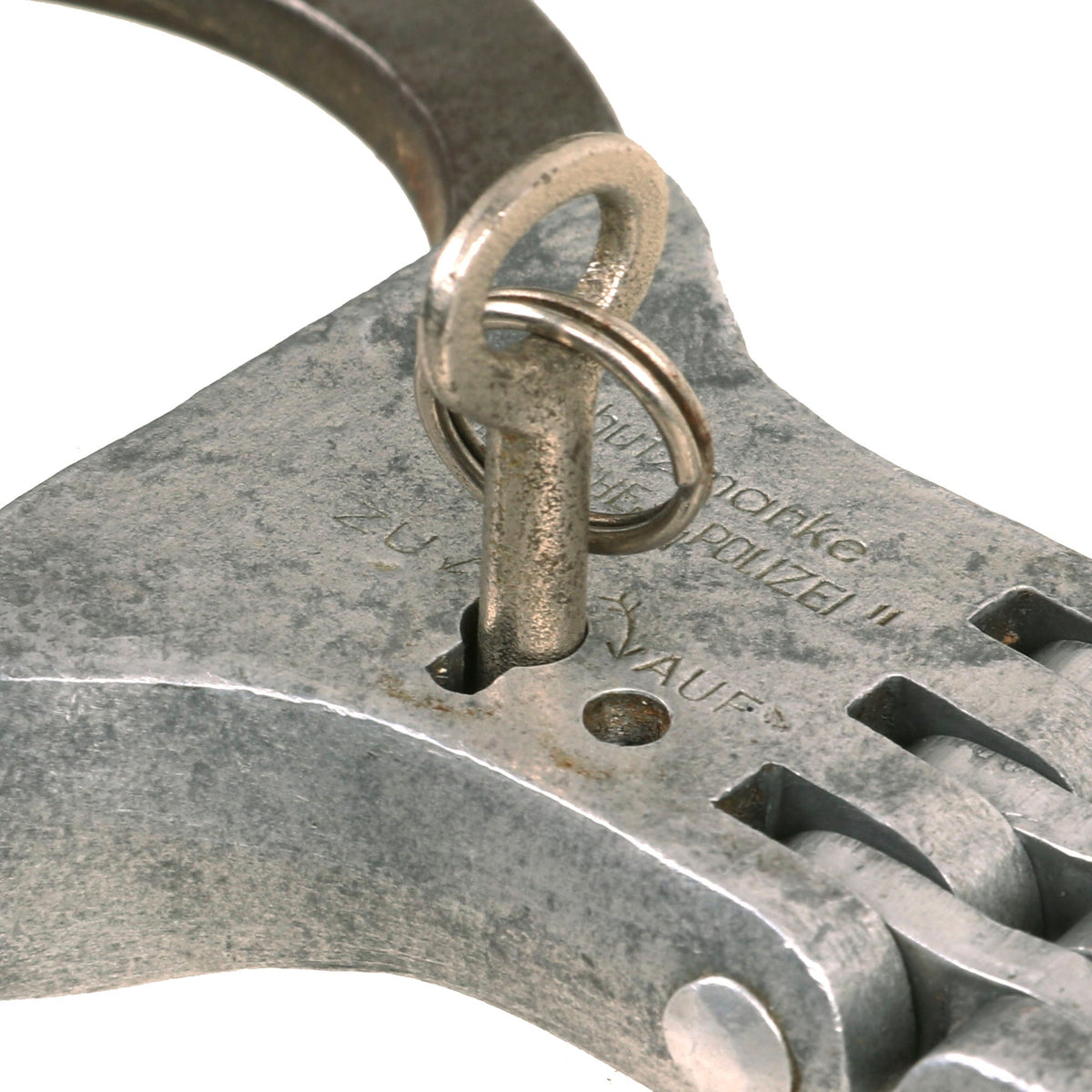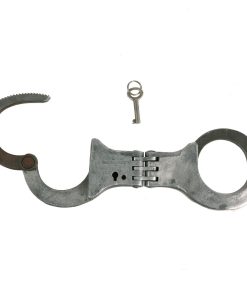Original German Pre-WWII Weimar Republic Aluminum and Steel Hinged Police Handcuffs with Key Original Items
$ 495,00 $ 148,50
Original Item: Only One Available. This is a very nice set of German Pre-WWII Weimar Period hinged police handcuffs, made with aluminum frames / double strands and steel / iron single strands with ratchets. They measure approximately 9 3/4 inches across, and are in very good condition, showing wear and oxidation commensurate with age. The cuffs are made of two identical pieces attached together at the hinge 180 degrees apart, and they are marked on the locking mechanism with:
Schutzmarke
” DEUTSCHE ✠ POLIZEI “
Below this is the keyhole with ZU and AUF next to arrows, indicating which direction to turn the key to release the lock and then the cuffs (AUF) or which direction locks them. When the cuffs are locked, the ratchet cannot be pushed in any farther forward, which prevents the wearer from pressing them farther closed, which could cause injury. This would be less than ideal, as having to remove cuffs that are too tight would run the risk of the prisoner escaping.
There is no maker mark that we can see on the cuffs, so we assume that “Deutsche Polizei” is a brand name used by are particular supplier. As best we can tell, the cuffs are fully functional, however these are being sold for collector and display purposes only.
Ready to research and display.
The Weimar Republic (Weimarer Republik), officially the German Reich (Deutsches Reich), also referred to as the German People’s State (Deutscher Volksstaat) or simply the German Republic (Deutsche Republik), was the German state from 1918 to 1933. As a term, it is an unofficial historical designation that derives its name from the city of Weimar, where its constitutional assembly first took place. The official name of the republic remained the German Reich as it had been during the German Empire because of the German tradition of sub-states.
Although commonly translated as “German Empire,” Reich here better translates as “realm” in that the term does not necessarily have monarchical connotations in itself. The Reich was changed from a constitutional monarchy into a republic. In English, the country was usually known simply as Germany, and the Weimar Republic name became mainstream only in the 1930s.
The Reichswehr (Realm Defense) formed the military organization of Germany from 1919 until 1935, when it was united with the new Wehrmacht (Defense Force). At the end of World War I, the forces of the German Empire were disbanded, the men returning home individually or in small groups. Many of them joined the Freikorps (Free Corps), a collection of volunteer paramilitary units that were involved in suppressing the German Revolution and border clashes between 1918 and 1923.
The Reichswehr was limited to a standing army of 100,000 men, and a navy of 15,000. The establishment of a general staff was prohibited. Heavy weapons such as artillery above the caliber of 105 mm (for naval guns, above 205 mm), armored vehicles, submarines and capital ships were forbidden, as were aircraft of any kind. Compliance with these restrictions was monitored until 1927 by the Military Inter-Allied Commission of Control. The Reichsmarine was the Navy Division of the Reichswehr.
Fast Shipping with Professional Packaging
Thanks to our longstanding association with UPS FedEx DHL, and other major international carriers, we are able to provide a range of shipping options. Our warehouse staff is expertly trained and will wrap your products according to our exact and precise specifications. Prior to shipping, your goods will be thoroughly examined and securely secured. We ship to thousands clients each day across multiple countries. This shows how we're dedicated to be the largest retailer on the internet. Warehouses and distribution centres can be located throughout Europe as well as the USA.
Note: Orders with more than one item will be assigned a processing date depending on the item.
Before shipping before shipping, we'll conduct a thorough inspection of the items you have ordered. Today, the majority of orders will be delivered within 48 hours. The delivery time will be between 3-7 days.
Returns
The stock is dynamic and we cannot completely manage it because multiple stakeholders are involved, including our factory and warehouse. So the actual stock may alter at any time. It's possible that you may not receive your order once the order has been made.
Our policy is valid for a period of 30 days. If you don't receive the product within 30 days, we are not able to issue a refund or an exchange.
You can only return an item if it is unused and in the same state as the day you received it. You must have the item in its original packaging.
Related products
Uncategorized
Armoured Fighting Vehicles of the World: AFVs of World War One (Hardcover Book) New Made Items
Uncategorized
Uncategorized
Uncategorized
Uncategorized
Uncategorized
Uncategorized
Uncategorized
Uncategorized
Uncategorized
Uncategorized
Uncategorized
Uncategorized
Uncategorized
Australian WWII Owen MK1 Machine Carbine SMG Custom Fabricated Replica with Sling Original Items
Uncategorized
